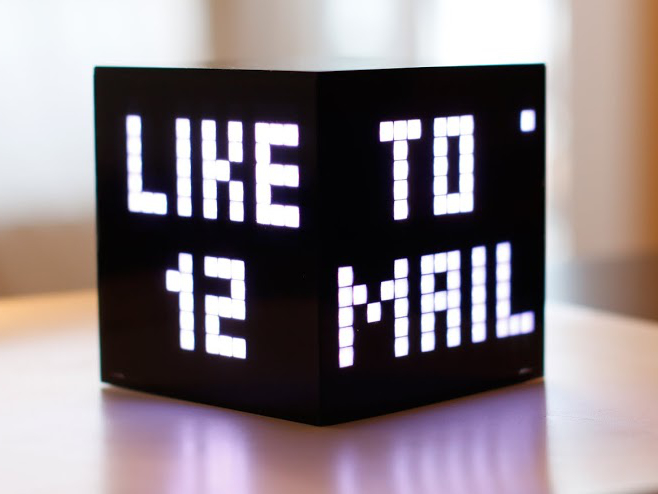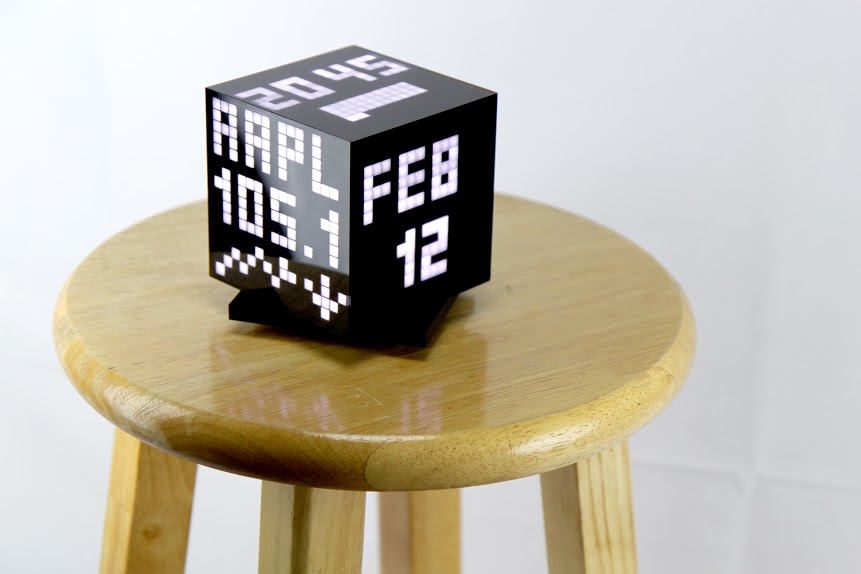Cuberox, App-Driven Linux-Based Cube, Has Six Touch Screens

Vancouver-based startup Cuberox launched a new Kickstarter campaign on Tuesday to raise funds for a Linux-based cube of the same name. This gadget sports a touch-enabled screen on each side and is capable of running six apps simultaneously. The campaign is shooting to acquire $150,000 in funding before the March 29, 2015 deadline.
"We've created a simple, easy-to-use device loaded with features that users will find applicable in their everyday use," said Dmitriy Popov, CMO of Cuberox. "A user can play games on the cube with friends over [a] network, race a pixel-car or send messages."
Cuberox consists of an iMX233 ARM926J processor clocked at 454 MHz, 64 MB of RAM and a 4 GB SD card that can store more than 8,000 Cuberox apps. The device also includes an accelerometer and gyroscope, Wi-Fi and Bluetooth connectivity and a 7800 mAh battery. All of this runs on the Arch Linux (3.16 kernel) operating system.
So what's the purpose of this cube? That depends on the apps you install. The company plans to offer an app store, named Cuberia, from which users can download and install items from Apple's App Store and Google Play. The cube can display the local weather, cooking recipes, Twitter feeds, email and much more. The company even suggested that owners can use the cube for navigation while driving.

"We create the API for developers, which will allow them to make custom apps and games for the cube," the Kickstarter page stated. "In addition, we use the JavaScript language, which is now one of the most popular and simple languages. Making your own app for Cuberox will be interesting and easy for both children and adult bearded programmers."
However, don't expect the Cuberox to offer high-quality visuals. The company purposely chose to stick with large, old-school pixels, and thus the resolution on each screen is 16 x 16 (1536 pixels total).
One of the cool aspects about this electronic cube is that apps can spread out across all six polycarbonate screens. There's also no gap between these screens, so the device is "absolutely" waterproof and dustproof. The company suggested that owners can play "Snake" while standing in the shower, or submerge the device in an aquarium.
Get Tom's Hardware's best news and in-depth reviews, straight to your inbox.

The accelerometer and gyroscope play a huge part in how users control the device. As an example, the Kickstarter page suggested that when the cube is displaying the local Los Angeles weather on one screen, users can rotate the device to show the weather in New York City. Users can control the cube by shaking, swinging, tapping on the surface and more.
For developers, the company has not only created an API, but a special module for Node.js so that developers can create Cuberox apps using JavaScript. "More than 127,000 packages in NPM allow for almost unlimited possibilities and functions," stated the website. "Creating custom apps for Cuberox is as easy as, for example, using Arduino."
The cube also comes packed with a stand that has built-in Qi Wireless charging, three speakers and multi-color LED backlighting capable of offering more than 256 colors. The stand measures 3.94 x 0.5 inches, whereas the cube itself is 3.94 x 3.94 x 3.94 inches.
So what led to the development of the Cuberox device? "We originally wanted to design some sort of a screen for our own usage that would allow us to display information such as weather, time, some data from our server, etc., but we later realized that one 16 x 16 screen would not be enough, and at the same time we thought about possibly controlling it," the Cuberox team told Tom's Hardware. "We decided that we could change what is displayed on the screen by rotating it, and that's when the idea of a cube came around. We got just the right number of screens to display data, and it was so convenient to receive specific information on each of the sides depending on user's need[s]."
"In addition, we wanted to create an independent device with ability to process data and avoid permanent hookup to a computer," the Cuberox team added. "We took an open-source board, wrote some code for drivers, our programmer wrote a simple code for the snake game, and we loved what the cube could do and the potential it had, so we decided to share it out with the world."
At press time, 137 backers have pledged $28,407, and there are 30 days to go. There are 11 tiers, ranging from pledging $5 that grants a place on the company's Hall of Fame, to pledging $10,000 that includes a trip to Prague as a reward.
According to the Kickstarter schedule, the company will begin developing Cuberia in April. The cube and stand are expected to go into production by September, while the API will be offered to developers in October. Early bird cubes will be shipped in November, followed by mass availability in December.
Follow Kevin Parrish @exfileme. Follow us @tomshardware, on Facebook and on Google+.

Kevin Parrish has over a decade of experience as a writer, editor, and product tester. His work focused on computer hardware, networking equipment, smartphones, tablets, gaming consoles, and other internet-connected devices. His work has appeared in Tom's Hardware, Tom's Guide, Maximum PC, Digital Trends, Android Authority, How-To Geek, Lifewire, and others.
-
zinabas 16x16 you say... anyone else think its odd they made a programmable minecraft cube that runs linux add colors to the screens and make them cheap and you've got the best lego set everReply -
bit_user Needs more pixels.Reply
How much would these cost? I'd be interested if they could sense & communicate with their neighbors and were sufficiently cheap that you could buy a decent number (say $100 for a 10-pack). Then, you could stack them to form larger screens, and I can imagine some interesting games this could enable. But I'm guessing they'll each sell for at least $100, making that a fairly moot point.
-
Maverickwolf @bit_user The early bird ones will cost $200 and the retail release ones will cost $300 a pieceReply -
bit_user Reply
Thanks. Yeah, I figured anything capable of running full-blown Android would need a fairly beefy SoC and a good chunk of RAM.15387570 said:@bit_user The early bird ones will cost $200 and the retail release ones will cost $300 a piece
I think they should make a 'lite' version using like a Coretex-M. Maybe they could make them even cheaper by making them specialized and putting different functions in each cube (e.g. a storage cube, a camera cube, a LTE cube, etc.).
But, if they could sense and communicate, then you could still have games for small groups of friends that each have one. -
aidynphoenix how is it going to show email and twitter feeds if its only 16x16 pixels? images are misleading its 4"x4" very small. i say bust.Reply -
bit_user Reply15387570 said:@bit_user The early bird ones will cost $200 and the retail release ones will cost $300 a piece
Yeah, given the price, it's just hard to see how these are going to succeed. I mean, with a screen that small, most people would only buy them as a novelty. And the market for $300 novelties probably isn't big enough to support that company.15389648 said:how is it going to show email and twitter feeds if its only 16x16 pixels? images are misleading its 4"x4" very small. i say bust.
-
bit_user Actually, if they would have high-res screens, it would be pretty neat for games where several people are seated at a small table, and for showing videos to friends. No matter where you sit, you'd have a good view of at least one face.Reply
If they could figure out some way to embed cameras in it, just imagine the multi-way video chats it would enable.
-
mortsmi7 I don't see how a cube is better than a female companion for playing "Snake" in the shower.Reply